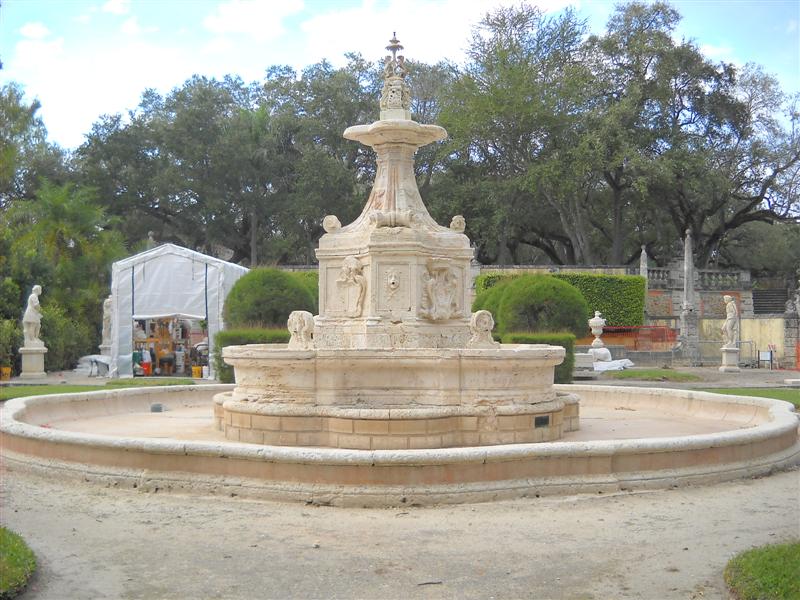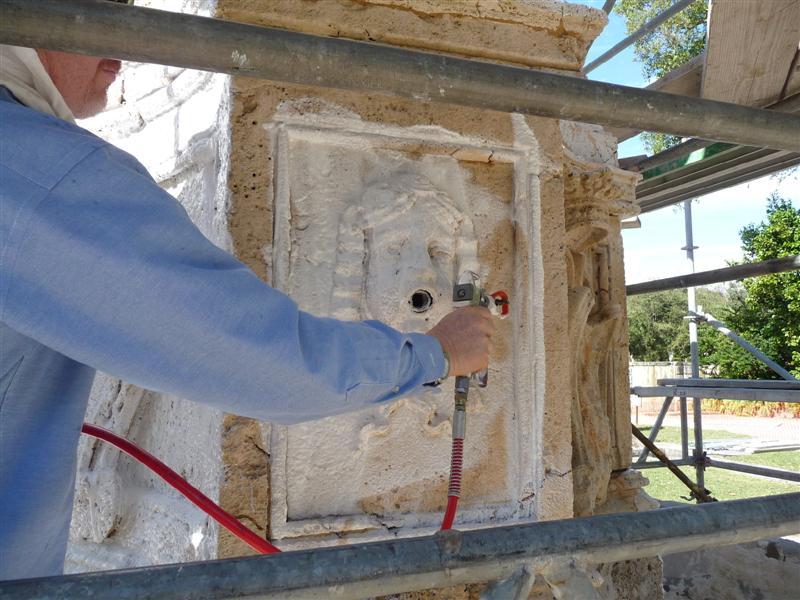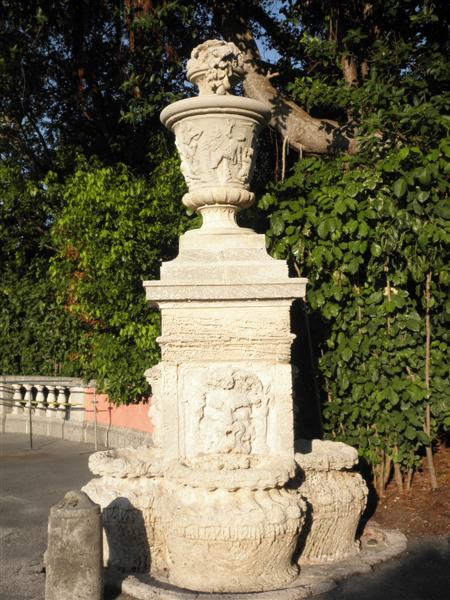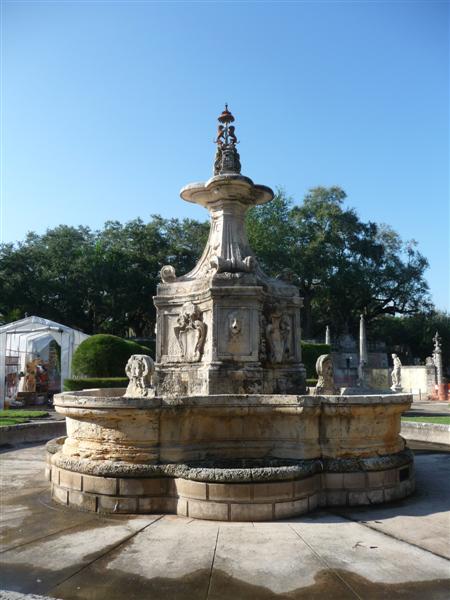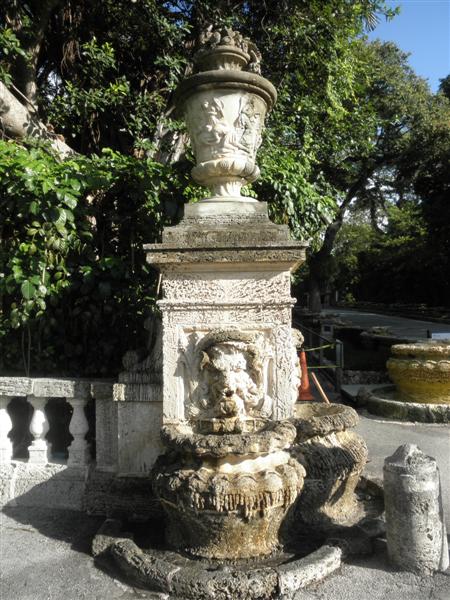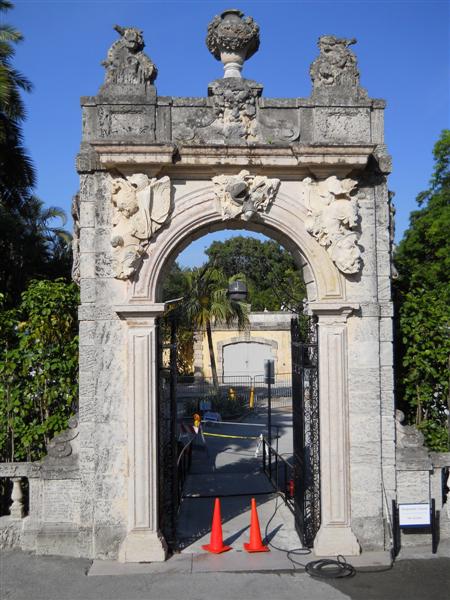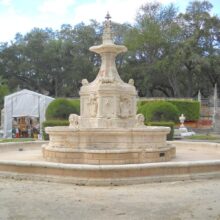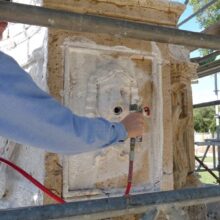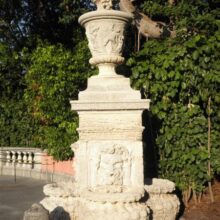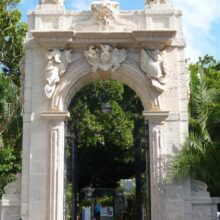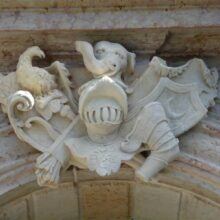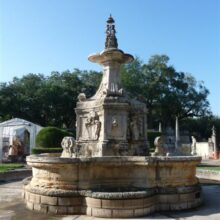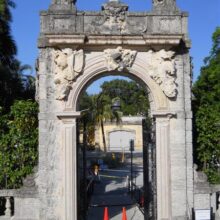Sutri Fountain & Garden Sculptures
The Sutri Fountain, constructed in 1722 for a town on the outskirts of Rome, is made of native Tivoli travertine in a design attributed to the Late Baroque architect Filippo Barigioni. The fountain was disassembled in 1908 in favor of a smaller fountain, whereby it was purchased by James Deering and transported to the U. S. To become a centerpiece of the garden at Vizcaya, his bayside estate in Miami, Florida. Today the Sutri Fountain is the focal point of the appropriately named Fountain Garden at Vizcaya Museum and Gardens, surrounded by a cadre of Italian Renaissance sculptures. The fountain was plagued by various types of biological soiling common to the tropical environment, mineral staining due to lack of water filtration, as well as erosion from years of operation. It had also been subjected to several repair campaigns. The opening of cracks in the basin walls and basin floor raised serious structural concerns, calling continued operation of the fountain into question.
We were contracted to perform the work on Sutri Fountain as part of a multi-year project to restore outdoor sculpture at Vizcaya. Treatment of the fountain began with overall cleaning to remove soiling followed by further investigation and testing to develop appropriate cleaning methods for persistent mineral staining. Repairs to the travertine elements included stone patching, new travertine dutchmen, crack injection and pinning to repair broken elements.
To address larger structural concerns, an engineering investigation was performed to assist in determining the scope of work required to repair the primary fountain basin. The final scope included: complete disassembly of the primary basin walls; demolition of the existing concrete basin floor slab; integration of new piping chaseways; removal and replacement of coral stone molding stones; pinning and reinstallation of the basin walls; and pouring of a new concrete basin slab. Water spray jets were replaced with low-volume heads and a new plumbing manifold was installed. The lead lion finial was repaired.
Throughout the project we worked closely with the Museum Curator and Collections Staff to realize their goals of preservation of the fountain.
